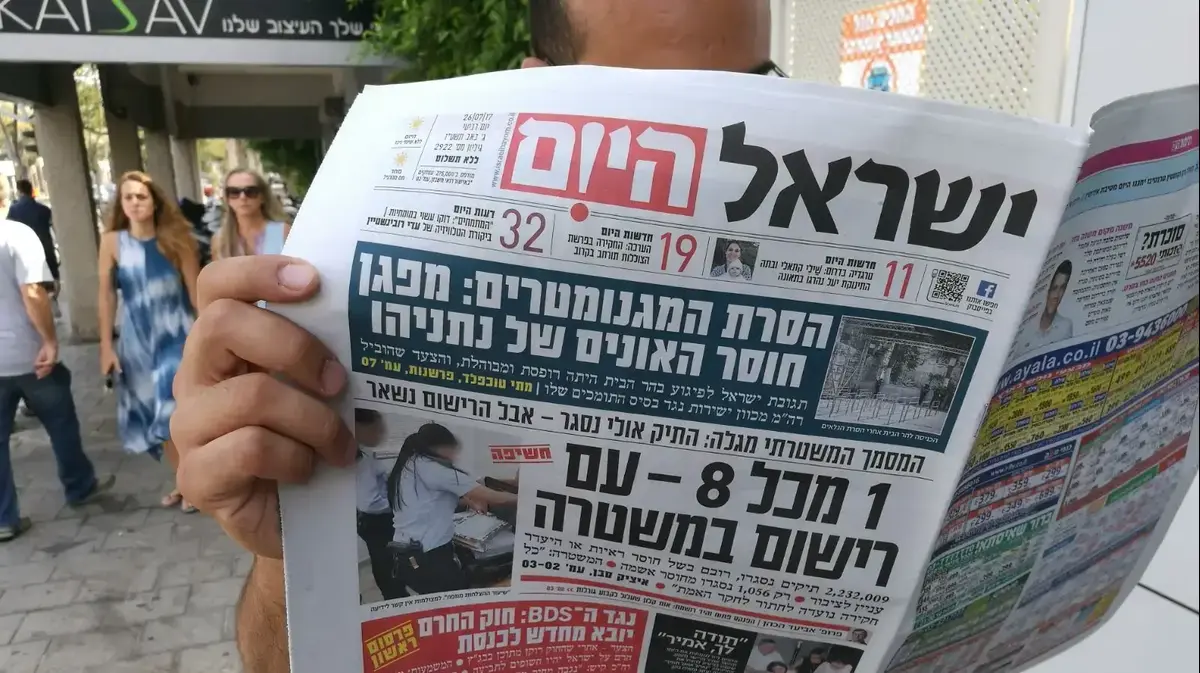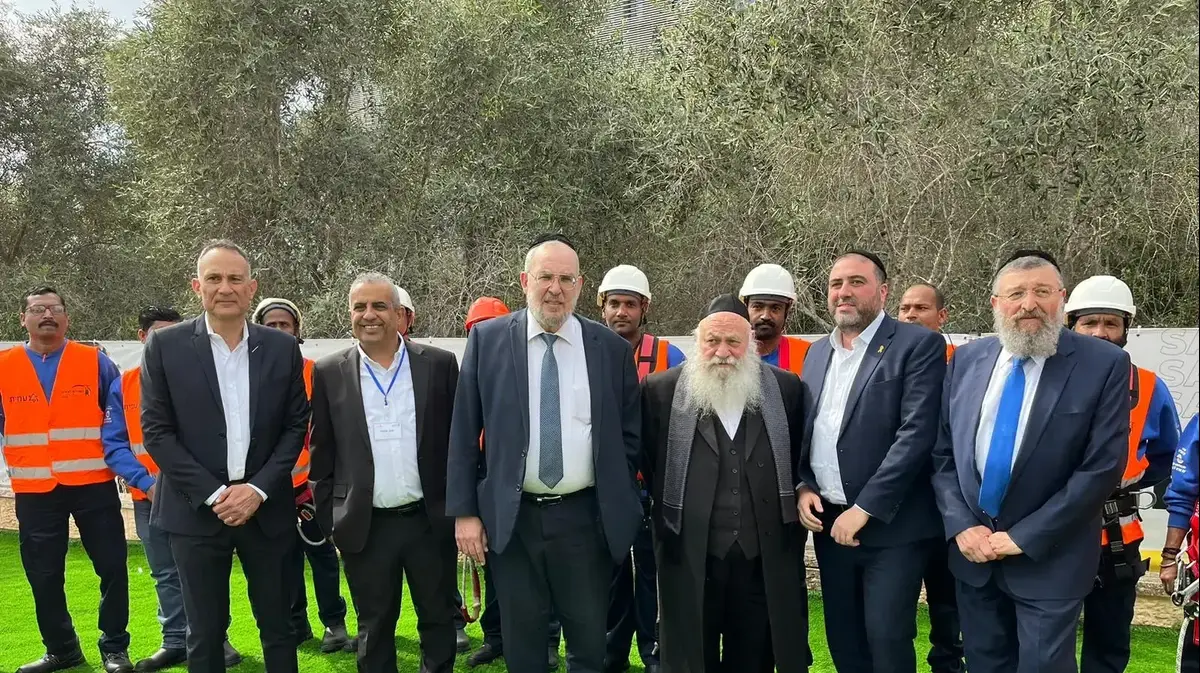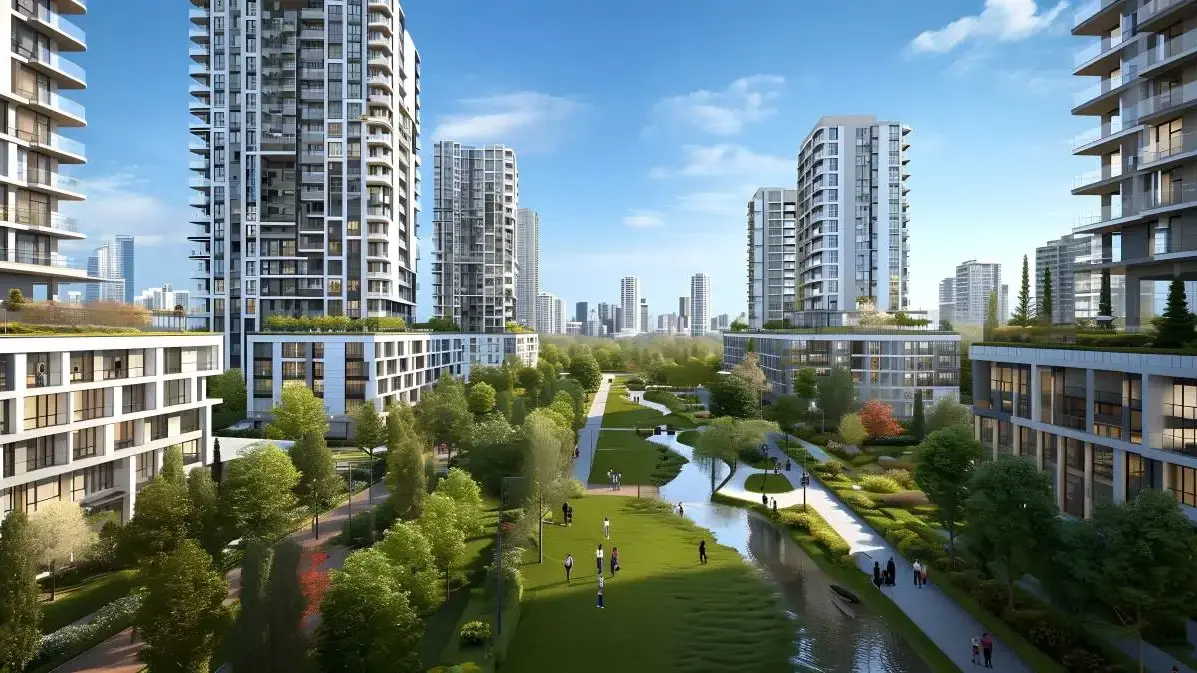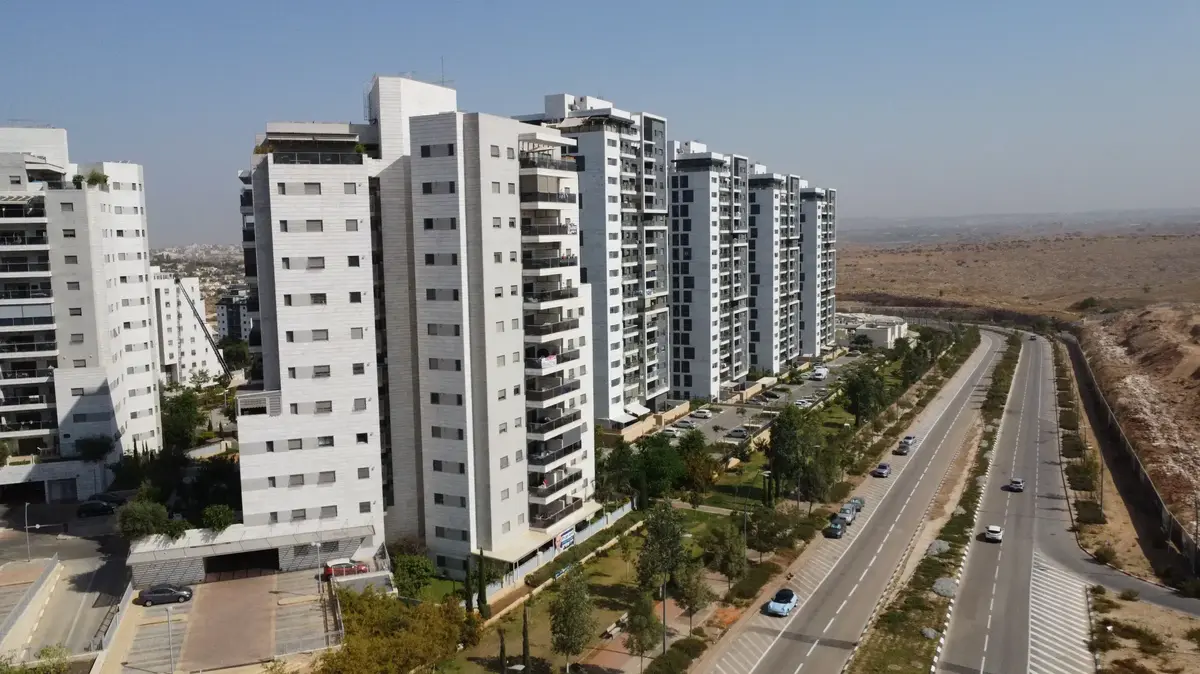"Home prices never fall", "There is not enough land", "Inventory is running out", "The housing crisis is unsolvable", "Only supply will solve the problem", "Neighborhood residents deserve only one value apartment".
So it's not.
Let's clear our heads and start all over again. No myths, no prejudices, no defense mechanisms, out of a desire for social justice and economic equality on the one hand and entrepreneurial profit on the other.
A study conducted by a team of researchers from the Academic Institute for Structural Reforms at Tel Aviv University, headed by Adv. Shraga Biran, rebuilt a national housing policy for the State of Israel over the course of a decade, while spreading false backpacks. It has now been finalized and is being brought here to the attention of the government and the public.
So let's take a breath and start from scratch, step by step. In the background: the High Court of Justice demanding an end to the oppression of residents of neighborhoods slated for renewal by recognizing the right to property in maximum and beneficial planning, while incentivizing contractors at an increasing profit rate.
Science fiction?
Not at all!
Affordable housing in sale on the basis of existing legislation. Will the residents of the neighborhoods and the homeless continue to remain silent?
1. Most of the land and planning are under state control
In today's Israeli reality, the marketing of land for housing by the Israel Land Authority (ILA) is done speculatively, through tenders to the highest bidder. Thus, the price of real estate in the State of Israel ranges from 25%-30% to 50%-60% of the value of the apartment, crazy prices caused by speculative marketing reaching an imaginary sum of NIS 202.742 billion, which, according to Central Bureau of Statistics data, was collected by the Israel Land Authority in the period 2003-2022.
"We must change the perception that sees the ILA as a 'business enterprise,' as the Accountant General at the Ministry of Finance explicitly says. In order to solve the housing crisis and improve the situation of the homeless population, the perception that sees Israeli land as a 'business' that must bring in maximum income at the expense of affordable housing must stop," adds Adv. Shraga Biran, founder of the Institute.
2. Israeli lands owned by the state – belong to the people
The State of Israel is a rich country. The average intangible wealth per capita is $500,20 per family. A large part is the "intangible wealth", not in land or natural resources, but first and foremost in human capital. In addition, Israel is one of the richest countries and is among the top 55 countries in the world in GDP, which reaches an average of $000,730 per year. Against this background, it is difficult to explain how nearly a third of the country's citizens – 000,50 households – are homeless. This does not happen in Singapore, for example, where land is also in the hands of the state and planning is centralized. But here, the government's hand is clenched, and the place of the homeless and their possibility of climbing the social ladder has been usurped, even though there is an extra-budgetary solution under the torch. The unimaginable wealth, the value of the unoccupied real estate is about a trillion shekels – and it does not reach the bottom five deciles of workers in the State of Israel, more than <>% of whom are poor.
On 50,730 dunams of urban land, the problem of affordable housing for 000,<> households can be solved, land completion, building rights and infrastructure completion can be solved.
3. Who are the homeless?
The homeless are more than 730,000 households, or about 2.5 million citizens, including about one million children. The homeless do not own an apartment, have no equity to purchase an apartment and have no access to a mortgage. About 60% of people who do not own an apartment, i.e., about 1.2 million people (offset by children), belong to the bottom five deciles, who earn up to NIS 7,000 a month. Their rent expenditure ranges from 30% to 40% of their total income. Among them are young couples, the elderly, Holocaust survivors, social benefits and residents of slums in city centers, who live in substandard housing and are considered to lack substandard housing, according to the criteria of the National Insurance Institute. These homeless people are at the root of the housing crisis. They raise prices from below because they compete for leftover housing and are forced to compromise on poor housing solutions, while the ILA's speculative marketing, which is not segmented at all, raises housing prices from above. From them everything begins.
4. What is the housing crisis?
In housing, the changing bureaucracies, the ones for whom the glass door turns, invent patents for us – but these patents lead to only two things. One - the increase in profits of the state, banks and contractors. The second thing is the conclusion that everyone is reaching, because all the "magic solutions" are one big failure, and now that the failure is reaching peaks – everyone understands that we need to turn over a new leaf – to promote a national housing policy for the State of Israel.
lack of affordable housing in the sale to the popular strata; the ongoing failure of urban renewal due to the non-recognition of property rights that would have entitles the residents of the neighborhoods and all residents of the state, who have property rights in combination transactions; Rising home prices from below, in the absence of affordable housing, and raising housing prices from above by marketing speculative land through the ILA to the highest bidder.
The housing crisis is literally – a crazy rise in real estate prices and consequently housing prices, which have led to the fact that although the state has complete control over land and planning, 50% of the country's bottom six deciles have no roof over their heads!
The urban renewal plan, including Pinui-Binui projects, is a complete failure, as for about 18 years, from 2005 to 2022, only a few thousand housing units were sold and only about 38,<> building permits were issued during the entire period.
The Institute filed a petition with the High Court of Justice to cancel Standard 21, which sentences the residents of the neighborhoods, some 540,000 families, to add 15-20 square meters to the stressful apartment they owned, which constitutes a violation of the property rights of the residents of the neighborhoods. The government, which thanks to Netanyahu initiated the urban renewal initiative, must immediately accede to this petition, which was declared a real criminal offense by the former Antitrust Commissioner.
The slogan advocating a method of increasing "supply", so that as the number of apartments increases, the housing crisis will be solved – not only did not lower housing prices but raised them, since the supply was speculative, unintended and unsegmented. The enlightened world recognized that supply must correspond not only to the traditional demand of the able-bodied, but also to the "demand", the traditional demand and also the "need" of the popular strata. Only then will the marketing of the ILA be dedicated and not speculative.
5. There is land for construction
Whenever the question arises as to why housing in Israel is so expensive and why the value of real estate already reaches about 60% of the value of the apartment, we hear from the government the well-worn answer: "What to do, there is very little land left in Israel for housing, there is nowhere to build."
For example, the State of Israel's strategic plan to solve the housing problem for the next 20 years states that there is a "depletion of land," so that if urban renewal does not succeed, the state will find itself in catastrophe. Despite all the cries and declarations, it must be said clearly: There is land in the State of Israel, and here is the evidence: Balance of state assets:
In the balance of state assets written by the Accountant General in the Ministry of Finance, it is explicitly stated that vacant lands constitute "about 91% of the total area of land held by the state. The future use of most of the land has not yet been determined (whether it will be designated for state use for the provision of services or for future marketing)." That is, almost all state-owned land is vacant land.
State Comptroller's report: A significant portion of the vacant land occupies IDF firing zones. After subtracting the occupied areas, the area remaining for planning state land is only 1.59 million dunams, which is about 7% of the country's area. However, the State Comptroller also refuted this claim, showing in a report from 20-21 that the firing zones are not 9.3 million dunams, but only 7.6 million dunams. Thank God, we earned 1.7 million dunams. We doubled the area held by the ILA from 1.59 to 3 million dunams.
This is also where the surprise comes – out of 7.6 million dunams, about 7.03 dunams are in the Negev. In other words, 92% of the firing zones are located in the Negev (south of Beersheba) in areas where demand is already low. Note that millions of residents of the country in urban areas occupy a total of only one million dunams. The total area of the State of Israel is about 22 million dunams. The urban area covers about 3 million dunams, while the built-up area stands at only about 1.2 million dunams, including residential, industrial, commercial and public buildings. If we refer only to Be'er Sheva and its north, the built-up area is only 10%.
The McKinsey Study: Even McKinsey, one of the world's most important research firms, has written that one of the biggest myths that is widespread and sabotaging affordable housing solutions is the myth that there is no land for affordable housing, repeated by all politicians and stakeholders who are not interested in affordable housing.
Data from the Central Bureau of Statistics: According to the Central Bureau of Statistics, at the end of 2013 (the most recent) only 5.6% of the land in the State of Israel was used for built-up areas. Of these, it emerges, only 66% are used for residential purposes. By the way, the additional built-up area since then has amounted to only 50,60-1,000 dunams.
There is also rural renewal, where in Israel there are about 600,350 settlements, moshavim and kibbutzim spread across the country. Their "camp," as it has been called over the years, includes about <>,<> dunams in built-up and developed communities, and they house only about <>,<> households!
According to Adv. Biran, "This is a paradise for green rural development. The goal is not to change the village into a city, but to understand that this is a developed area with tremendous infrastructure and therefore it is a land reservoir that is not fully utilized. These communities are adjacent to the city, and it is necessary to develop them through NOP as green rural renewal, which will be suitable for rural areas, and thus create space for the nuclei of new human capital, young people and future generations."
In other words: there is land, all that remains is to build – and effectively! "Unused land is a crime," continues Attorney Biran. "Tello is happening from between your eyes for the sake of providing a roof over your head for the homeless in Israel. It is possible to use a small part of the land to provide space for construction and finance solutions for the homeless."
6. Require the state to manage Israeli lands according to law
Legislation in the State of Israel allows for a national housing policy without the need for any additional legislation. All that is required is the implementation of existing legislation in a strict manner without the need to go to the courts, against the violation of the law and its non-implementation by some branches of the state in the current reality.
The state must abandon the business paradigm with regard to the land of the authority, which is operated in violation of the law that requires the granting of affordable housing and respect for property rights to the residents of the neighborhoods. The change in perception is not only a necessary condition for dealing effectively with the housing crisis and the issue of homelessness, but also complies with the provisions of the Israel Land Authority Law, 1960-<>, which explicitly establishes the social functions of the ILA:
"Allocation of land for residential purposes, affordable housing, public housing, employment, open spaces and for other purposes, in places and to the extent required by the needs of the economy, society and the environment, Most have future needs."
The only solution: a national housing policy, as opposed to the patchwork policy. In order to shape the housing policy of the State of Israel, whose basic components are planning, land and finance policy, in a way that will solve the housing crisis, a complex of decisions is required in each of the components of national housing policy.
The existing legislative system makes it possible to implement and realize the tasks before us in the field of housing without the need for additional legislation, as stated. The transformation of housing can be carried out – here and now.
7. The basis of a strategic plan for housing of the State of Israel
So what needs to be done here and now, in order to establish and implement the national housing policy, to renew renewal and to provide affordable housing? Termination of speculative marketing. The transformation, as we have shown, can be realized because the legislation regulating each of the foundations of housing policy exists. The operation of the law requires decisions of the appropriate authorities.
The segmented planning that requires the ILA to market the land according to it is an existing document worthy of praise. In order to bind all planning entities at all levels and marketing by the ILA, validity must be given to the segmented planning within the framework of a national master plan for planning and building.
A national outline plan for urban renewal should be planned based on recognition of the property rights of the residents of the neighborhoods, and the granting of maximum and optimal building rights to the residents, who are the owners of the land.
Marketing the land according to the Israel Land Authority Law can be realized by decisions of the ILA Council, which are in effect decisions of the government. This is possible, of course, on the basis of legal provisions that require the ILA to market affordable housing for sale, to realize the renewal, and to segmented marketing.
The financing required for affordable housing is well regulated by the Housing Loans Act 1992, which includes the arrangement of the system of "directed" mortgages and "stagnant" loans, which are the way to finance affordable housing for the homeless and equity, and access to mortgage banks.
8. Realizing the segmentation revolution in the Planning Administration
In a revolutionary new document issued by architect Erez Ben-Eliezer, titled "The Mix of Housing Sizes in Israel – A Background Document," the planning administration's top brass calls on the political system to abandon the "supply concept" as the only solution, and points to the need for a systematic examination of the demand side and the variety of households as well.
According to the document, such an examination will provide "a response to diverse needs in the population, thereby positively affecting the socioeconomic mix, which may be more inclusive and healthy, and will in turn encourage more diverse planning of construction types and characteristics."
The study condemns "the dominance of the real estate market in the perception of housing as a uniform product traded in a sophisticated market, in which there is a balance between supply and demand," and points to the destructive consequences of this concept. "We need to formulate a policy that will lead to diversification of the housing mix in Israel at this time."
The Academic Institute for Structural Reforms and Adv. Biran argue that the Israeli government is not entitled, even for a moment, to ignore these determinations of the Planning Administration.
The ILA must allocate the land on the basis of segmentation – segmentation: dedicated marketing based on the needs and abilities of the various strata of Israeli society, "just as the price of uniform bread is not the same as the price of sourdough, challah or light bread," says Adv. Biran.
Biran Photo: Vardi Kahane,
9. The "Site-Plan-& Build" method How will all this be done?
It is necessary to market 40,000 dunams spread throughout the country, as a solution to the housing problem for the homeless. The ILA has a database of land in city centers that is not marketed to the public. Marketing small and unplanned plots to small contractors and small and medium-sized construction companies in a "site-plan-and-build" framework will enable the rapid flow of affordable housing units (by sale) into the market and will help drive the Israeli economy and the small contractors industry, which has been pushed aside over the years.
The new track will enable quick access by small contractors and medium-sized construction companies to small plots currently underutilized by local authorities, while allocating them to designated and segmented construction for those without owned housing. The developers, in this case, will be the local authorities, those entitled to affordable housing and the contractors of the premises.
For illustrative purposes only, it will say: 700,000 housing units (which claim the number of homeless households) in an area of about 100 square meters each. Therefore, construction of about 7,000 buildings on 12 floors (considering that each building has about 100 apartments) is required nationwide. Such a building sits on land with an average area of about 3 dunams, so that about 21,000 dunams are enough to provide a solution for the homeless in Israel. A similar addition of about 20,000 dunams for public use, incentivized by the authorities and contractors, will double the supply of housing, so that the housing crisis in the State of Israel will be solved by only 40,000 dunams.
10. Renewal of renewal and affordable housing
Respecting property ownership in urban renewal land and affordable housing for the homeless in the State of Israel will be a tremendous achievement in solving the problem of poverty in the State of Israel.
Renewal of urban renewal for the benefit of the entire city through the "From Neighborhood to Quarter" program. The neighborhoods will become urban districts that will be planned holistically and optimally, and not on an individual and random basis as is done today.
As part of the Urban Renewal Outline Plan, land will be allocated for income-producing development to the local authority at a rate of 20%. The areas can be used for social purposes or revenues for the authority, which will serve as a basis for covering development expenses.
Incentive for entrepreneurs: The Urban Renewal National Outline Plan will enable developers to take possession of projects with huge construction volumes, which have certainty and proprietary and planning adequacy. The local authority and contractors, the "builders of the country", will compete directly for projects in an orderly and concentrated "quarter", with property and planning – clear, and not participation in the "black market", which is often rife with conflicts of interest and enforcement. This is a win-win for all parties: the municipality, developers and residents.
The renewal of renewal and affordable housing not only solve the housing problem in the State of Israel, but also take the war on poverty a big step forward and create the way for raising the popular strata of society.
Institute for Structural Reform, what is it?
The Institute for Structural Reforms is a research institute founded by Adv. Shraga Biran and operating for decades. The Institute works to promote the rise of the social ladder for the popular strata and headed the National Task Force on Urban Renewal and Affordable Housing, which became law in 2009 under the government of Benjamin Netanyahu.
Wrong? We'll fix it! If you find a mistake in the article, please share with us












/cloudfront-eu-central-1.images.arcpublishing.com/prisa/KMEYMJKESBAZBE4MRBAM4TGHIQ.jpg)


